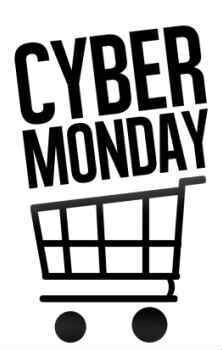
E-commerce trends and developments in the United States
Selling Online with E-Commerce in the United States
ExportUSA has extensive experience in the development of e-commerce websites
https://www.exportusa.eu/ecommerce-usa.php (+1) 718-5225575
(+1) 718-5225575
The U.S. economy has experienced favorable growth, with GDP increasing at a rate close to 3%, employment reaching historic highs, the unemployment rate dropping to 3.9%, and average wages rising by 4%.
This positive economic environment has benefited retail sales in the United States:
Online sales in the U.S. also saw growth in 2018:
At ExportUSA, we believe that e-commerce in the U.S. will continue to grow, reaching 25% of total retail sales. Based on current U.S. GDP values, this translates to an absolute value of $1.5 trillion.
Additionally, the 2018 holiday shopping season, including Thanksgiving, Black Friday, and Cyber Monday, saw record retail sales (both online and traditional), totaling $719 billion — a 4.7% increase compared to 2017.
The so-called "retail apocalypse" in the U.S. has been officially debunked. It appears that people still enjoy putting down their smartphones, getting off their couches, and visiting physical stores for shopping. Over the past three years, thousands of stores in America have closed. In 2017 alone, more than 7,000 retail locations shut their doors in the United States. Many experts anticipated that 2018 would be even more challenging for the retail industry.
However, this was not the case. In 2018, approximately half of American stores reported financial results comparable to the previous year. In fact, there was an increase in physical retail sales in the U.S., driven by startups opening their own stores and major real estate companies planning new shopping centers in various American cities.
The reality is that the issue wasn't that people had become too lazy to leave their homes, preferring to shop online. It became evident that shopping in physical stores is an experience that, all things considered, is worthwhile and can even be enjoyable.
In 2018, many online brands launched retail concepts such as Instagrammable cafes; Glossier, the most popular indie beauty brand, opened its first permanent store in New York City, offering an immersive and photogenic shopping experience.
These developments indicate a shift in the retail landscape, where physical stores are not disappearing but rather transforming to complement the online shopping experience, providing unique value to consumers.
In 2019, American consumers are expected to seek their favorite brands in physical stores, and for brands that sell exclusively online in the U.S., it will be essential to consider integrating online sales with their own physical stores.
2018 was the year many American e-commerce startups realized that physical stores can be a tremendous asset for deepening the brand’s relationship with the customer. Paul Hedrick, founder and CEO of Tecovas, a cowboy boot startup based in Austin, Texas, saw the opening of a physical store as an opportunity to build customer loyalty. "We discovered that people still love walking around shopping and touching products," he says. "And we found that interacting with the brand in-store helps foster customer loyalty."
The success of the Austin store convinced Hedrick to open five more locations across Texas in 2019. Many other e-commerce startups initially selling online directly to end consumers are planning to open physical stores in the U.S. in the coming months.
Many brands are expanding: Allbirds, Everlane, Naadam, Cuyana, Outdoor Voices, MM.Lafleur, Away, Tamara Mellon, and Glossier have all opened stores across various parts of the United States in recent months or have announced plans to do so soon. Casper, the e-commerce mattress company, is planning the most significant expansion with 200 store openings in the U.S. starting in 2019.
The stores that American e-commerce startups are planning to open will not resemble the traditional stores found in old shopping malls. Instead, they will be designed to complement the online shopping experience. Everlane, for example, has developed in-store technology that connects customers to their online profiles, allowing them to use the credit card saved on their online account to make purchases in physical stores.
Many of these stores will have smaller spaces, encouraging customers to view products in-store and then purchase them online directly from the physical location. Additionally, brands will use stores as venues for hosting events, conferences, and parties. Everlane’s store in San Francisco, for example, features stadium seating specifically designed for such events.
Amazon is developing a system using facial recognition to charge customers for the products they purchase. The company has opened seven Amazon Go stores, where shopping is entirely checkout-free, and plans to open more, including small stores in office lobbies. It won’t be long before this technology spreads to other American retailers.
Amazon warehouse workers complain of low wages and poor treatment. Public outrage also grew over Amazon’s strategy of making cities compete to host its second headquarters, which ultimately went to New York City and Northern Virginia, sparking fears of rising residential rents. Meanwhile, searches for "cancel Amazon Prime" have risen on Google Trends over the past year, indicating a growing number of consumers opting out of the service. For now, Amazon's dominance in e-commerce makes this seem insignificant, but the trend of Americans canceling Prime memberships is expected to grow in 2019.
For years, platforms like Facebook and Instagram have attempted to launch social e-commerce, enabling users to purchase products directly from posts. However, this approach has struggled to gain traction among American consumers. Most Facebook and Instagram users viewed products on these platforms but completed their purchases elsewhere. According to Deb Liu, Facebook’s vice president of Marketplace, 2019 will be the year social media shopping finally gains momentum. "We’re starting to see a shift in American consumer behavior," Liu says.
Brands are expected to use Instagram Stories to give users behind-the-scenes looks at fashion photoshoots and offer immediate purchase options for featured products.
One of the main retail themes in 2019 will be the fight against climate change. The second half of 2018 saw reports from the United Nations and the U.S. government warning that climate change is progressing faster than expected. These findings coincided with a year of natural disasters across the U.S., from California wildfires to devastating hurricanes. Sustainability, already a buzzword for Millennials in retail, will take on even greater significance in 2019. Consumers will demand it.
Reports from Greenpeace about plastic waste caused searches for reusable straws on Etsy to rise by 205%. Facebook noted increased discussions on bioplastics, carbon dioxide removal, and durable, eco-friendly fashion. The prediction for 2019 is clear: sustainable shopping will become a moral imperative, and brands embracing this philosophy will thrive.

ExportUSA has extensive experience in the development of e-commerce websites
https://www.exportusa.eu/ecommerce-usa.php
While slow fashion is gaining support with American members of Gen Z, the fast fashion race in the US is showing no signs of stopping
https://www.exportusa.eu/fashion-trends-in-america.php
Online shopping behavior in the United States: online sales of fashion clothing and accessories on the rise for the Holiday Season, Black Friday and Cyber Monday
https://www.exportusa.eu/online-sales-in-the-usa-smartphone-essential-in-influencing-buying-decisions.html
Technological innovation is reshaping the beauty industry in the U.S., with big tech collaborating with major beauty brands to revolutionize the market
https://www.exportusa.eu/beauty-trends-hi-tech-america.php